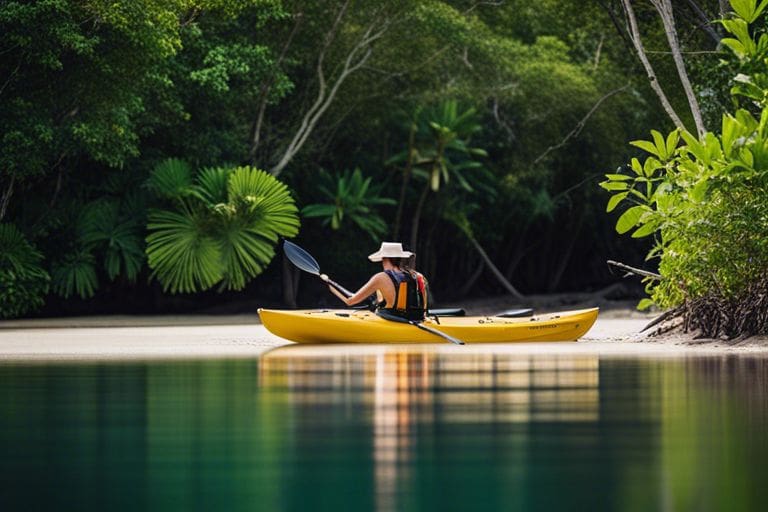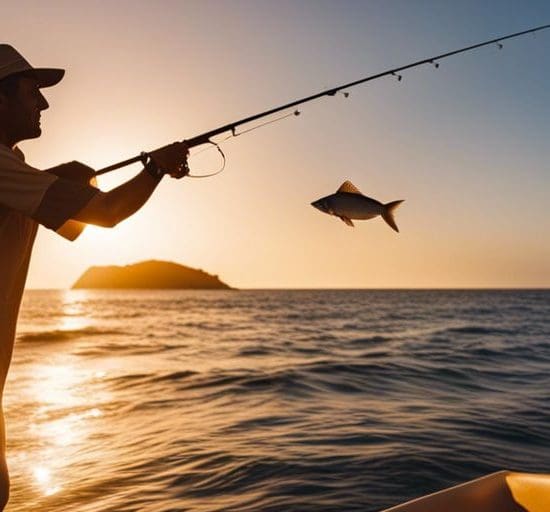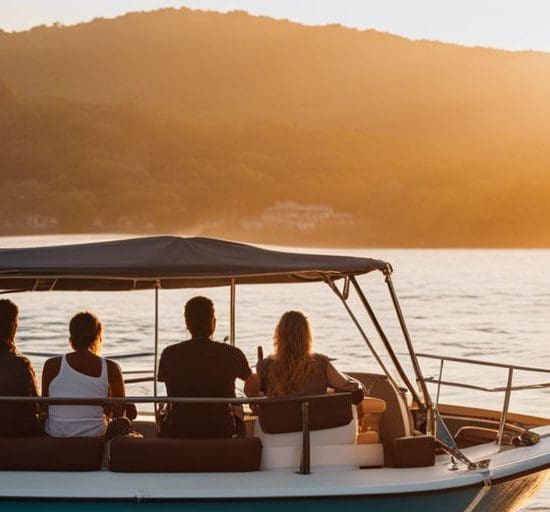
Exploring The Pristine Mangroves – A Kayaking How-To Guide In Puerto Escondido
This kayaking how-to guide will take you on a journey through the pristine mangroves of Puerto Escondido, offering a unique opportunity to connect with nature in a peaceful setting. Mangrove Kayaking Puerto Escondido is an experience like no other, allowing you to explore the beauty of these ecosystems up close and personal. Before you initiate on this adventure, it’s important to be prepared and informed to make the most of your time on the water.
This guide will provide you with crucial tips and safety precautions to ensure a smooth and enjoyable kayaking experience in the mangroves of Puerto Escondido. Whether you are a beginner or an experienced kayaker, exploring these mangroves will undoubtedly leave you with lasting memories of adventure and serenity.
Key Takeaways:
- Prepare adequately: Before setting out for a kayaking adventure in Puerto Escondido’s mangroves, make sure to pack necessarys like water, sun protection, and insect repellent.
- Respect the environment: While kayaking, maintain a respectful distance from the wildlife and avoid disturbing the delicate ecosystem of the mangroves.
- Stay hydrated: Paddling through the mangroves can be physically demanding, so remember to stay hydrated throughout your journey.
- Choose the right kayak: Opt for a stable and easy-to-maneuver kayak suitable for navigating the narrow waterways of the mangroves.
- Guided tours: Consider joining a guided kayaking tour to learn more about the flora, fauna, and history of the mangroves from knowledgeable locals.
- Embrace the tranquility: Take moments to pause, observe the beauty of the mangroves, and appreciate the peace and serenity of the natural surroundings.
- Practice safety: Always wear a life jacket, inform someone of your kayaking plans, and be mindful of changing weather conditions to ensure a safe and enjoyable experience in the mangroves.
1. Rent a kayak from a local rental shop.
2. Pack water, sunscreen, and a waterproof bag for valuables.
3. Follow a guide or map to navigate the mangrove network.
4. Stay quiet to observe wildlife like birds and crabs.
5. Paddle slowly to enjoy the serene surroundings.
6. Return your kayak on time and with all equipment.
Understanding Mangroves
While kayaking through the serene waters of Puerto Escondido, it’s imperative to have a good understanding of the delicate ecosystem you are exploring. Mangroves play a crucial role in the coastal environment, providing habitat for a wide range of marine life and protecting the shoreline from erosion.
What are Mangroves?
On a basic level, mangroves are salt-tolerant trees and shrubs that grow in coastal intertidal areas. These trees have unique adaptations to survive in saline water and unstable soil conditions. Their complex root systems not only provide them stability but also serve as nurseries for young fish and other marine species. Mangroves help maintain water quality by filtering pollutants and act as a buffer against storms and hurricanes.
Types of Mangroves in Puerto Escondido
A variety of mangrove species can be found in the mangrove forests of Puerto Escondido. Each type has its own characteristics and adaptations to the local environment. Knowing which mangrove species you encounter can deepen your appreciation for this unique ecosystem.
- Red Mangrove (Rhizophora mangle) – characterized by its prop roots that provide stability in the muddy substrate.
- Black Mangrove (Avicennia germinans) – identified by its pneumatophores, which help with oxygen exchange in waterlogged soil.
- White Mangrove (Laguncularia racemosa) – known for its excretory salt glands that allow it to thrive in saline conditions.
- Buttonwood Mangrove (Conocarpus erectus) – often found on higher ground than other mangrove species.
- Green Mangrove (Pelliciera rhizophorae) – recognized by its glossy green leaves and unique reproductive structures.
Knowing the differences between these mangrove species can enhance your kayaking experience as you navigate through the intricate network of roots and branches. Each type contributes to the overall biodiversity and resilience of the mangrove ecosystem in Puerto Escondido.
Preparation for Mangrove Kayaking
Not every kayaking adventure is the same, especially when exploring the pristine mangroves of Puerto Escondido. Proper preparation is crucial to ensure a safe and enjoyable experience. Here is a guide to help you get ready for your mangrove kayaking expedition.
Essential Gear and Equipment
An crucial part of preparing for a mangrove kayaking trip is making sure you have the right gear and equipment. You’ll need a sturdy kayak that is suitable for navigating through narrow waterways, along with a paddle that is the right size for you. Additionally, it’s crucial to have the appropriate safety equipment, such as a life jacket and a whistle in case of emergencies. Don’t forget to pack plenty of water, snacks, sunscreen, and a dry bag to keep your belongings safe from the water.
Safety Tips Before You Paddle
One of the most important aspects of preparing for a mangrove kayaking adventure is ensuring your safety on the water. Before you head out, make sure you are familiar with the local weather conditions and tides to avoid getting caught in unfavorable situations. Always let someone know your planned route and expected return time. It’s also wise to paddle with a buddy or in a group for added safety.
- Check the weather conditions before heading out on the water.
- Inform someone of your planned route and expected return time.
- Paddle with a buddy or in a group for added safety.
After taking these safety precautions, you can set out on your mangrove kayaking journey with peace of mind, ready to explore the beauty and tranquility of this unique ecosystem.
Kayaking Skills and Techniques
After gearing up and getting comfortable in your kayak, it’s time to focus on honing your kayaking skills. Mastering basic paddling techniques and learning how to maneuver through intricate mangrove forests is imperative for a successful kayaking adventure in Puerto Escondido.
Basic Kayaking Strokes
Skills: Before initiateing on your kayaking journey, it’s crucial to familiarize yourself with basic kayaking strokes. The forward stroke, reverse stroke, sweep stroke, and draw stroke are fundamental techniques that will help you navigate through the water smoothly. Practice these strokes on calm water before venturing into the mangrove forests to ensure you feel confident and proficient.
Maneuvering Through the Mangrove Forests
Mangrove: Navigating through the enchanting but challenging mangrove forests requires skill and precision. The narrow waterways, overhanging branches, and intricate root systems can present obstacles for kayakers. It’s imperative to stay focused and agile, using a combination of forward and sweep strokes to maneuver through tight passages and around obstacles. Keeping a low profile in your kayak can help you glide gracefully through the dense mangroves without getting tangled up.
Understanding the unique environment of the mangrove forests is crucial for a successful kayaking experience. These biodiverse ecosystems are teeming with wildlife, from colorful birds to jumping fish. While navigating through the mangroves, keep a lookout for hidden treasures like nesting birds or playful dolphins. Embrace the challenge of paddling through this dynamic environment, and you’ll be rewarded with unforgettable sights and a sense of accomplishment.
Step-by-Step Kayaking Adventure
For a successful kayaking adventure in the pristine mangroves of Puerto Escondido, it’s crucial to be well-prepared and informed. Below is a breakdown of the imperative steps to make the most out of your exploration.
| 1. Launching your Kayak | 2. Navigating the Mangrove Ecosystem |
| To start your kayaking journey, carefully push your kayak into the water and ensure it’s stable before getting in. Sit comfortably and adjust your footrests and backrest for support. | The mangrove ecosystem is a complex network of roots and channels. Follow the natural flow of the water and be mindful of low-hanging branches or hidden obstacles. |
Launching your Kayak
When launching your kayak, be aware of your surroundings and potential hazards in the water. Remember to wear your life jacket at all times and carry imperative safety equipment such as a whistle and a first aid kit.
The mangrove ecosystem is teeming with diverse wildlife such as birds, crabs, and even crocodiles. Keep a respectful distance from the wildlife and avoid disturbing their habitat.
Mangrove Adventure: While kayaking through the mangroves, keep an eye out for the intricate root systems and unique plant life that thrive in this environment. Take in the serenity of the surroundings and appreciate the natural beauty that surrounds you.
What to Do if You Encounter Wildlife
With the possibility of encountering wildlife during your kayaking adventure, it’s crucial to remain calm and observant. Maintain a safe distance and avoid sudden movements that may startle the animals.
Adventure: If you come across any wildlife, such as birds nesting or crocodiles sunbathing, admire them from a distance and refrain from approaching or feeding them. Respect their space and remember that you are a guest in their home.
Environmental Factors and Considerations
Keep in mind that when kayaking in the pristine mangroves of Puerto Escondido, there are several environmental factors to consider to ensure a safe and enjoyable experience.
Tidal Influences on Kayaking Routes
Now, one crucial factor to be aware of is the tide. The tides in the mangroves can drastically affect your kayaking routes. It’s important to check the tide charts before setting out on your journey. High tide can provide more water in shallow areas, making navigation easier, while low tide can expose rocks and roots, requiring more careful maneuvering. It’s advisable to plan your kayaking trips around high tide to avoid getting stuck or damaging the fragile ecosystem.
Weather Patterns and Planning Your Trip
Your kayaking expedition can also be greatly influenced by the weather patterns in Puerto Escondido. It’s vital to check the weather forecast before heading out to ensure a safe and enjoyable trip. Strong winds and rough seas can make kayaking challenging and even dangerous. Additionally, sudden weather changes are not uncommon in this region, so always be prepared with proper gear and clothing.
The weather patterns in Puerto Escondido can be unpredictable, so it’s crucial to stay informed and flexible with your plans. Always have a backup route or alternative activity in case the weather conditions become unfavorable. After all, safety should be your top priority when exploring the beautiful mangroves of Puerto Escondido.
The Pros and Cons of Mangrove Kayaking
Many factors should be considered when launching on a kayaking adventure through the pristine mangroves of Puerto Escondido. It is important to weigh the pros and cons to ensure a safe and enjoyable experience. Below is a breakdown of the advantages and challenges of mangrove kayaking:
| Advantages | Challenges |
| Opportunity to observe diverse wildlife | Potential navigation difficulties due to narrow waterways |
| Exploring unique ecosystems | Risk of encountering sharp mangrove roots |
| Chance to experience tranquility and natural beauty | Possibility of getting stuck in dense mangrove areas |
| Physical exercise while enjoying the outdoors | Exposure to insects and wildlife hazards |
Advantages of Kayaking in Mangrove Ecosystems
An incredible advantage of kayaking through mangrove ecosystems is the unparalleled opportunity to observe diverse wildlife in their natural habitats. From birds to fish to reptiles, the mangroves are teeming with life waiting to be discovered. Additionally, exploring these unique ecosystems can provide a deep sense of connection to nature and a greater appreciation for conservation efforts.
Challenges and How to Overcome Them
Mangrove kayaking comes with its set of challenges that adventurers must be prepared to face. One common challenge is the risk of encountering sharp mangrove roots that can puncture kayak bottoms or cause injury. It is imperative to navigate carefully and be aware of your surroundings to avoid such obstacles. Additionally, the possibility of getting stuck in dense mangrove areas calls for effective paddling techniques and a keen sense of direction.
Mangrove kayaking can be a thrilling experience, but it is crucial to be aware of the potential challenges and how to overcome them. With proper preparation and caution, adventurers can navigate through the mangroves safely and enjoy all the wonders this unique ecosystem has to offer.
Making the Most of Your Experience
Once again, if you want to make the most of your kayaking experience in the pristine mangroves of Puerto Escondido, it’s important to choose the right tour. Check out The BEST Puerto Escondido Canoe & kayak tours 2024 to ensure a well-guided and memorable adventure.
Photography Tips for Capturing the Mangrove Beauty
When exploring the breathtaking mangroves, don’t forget to capture the moments with your camera. To make the most out of your photography, remember these important tips:
- Utilize natural light: Early morning or late afternoon light can create a magical ambiance in your photos.
- Focus on details: Highlight the unique roots, wildlife, and reflections in the water to showcase the beauty of the mangroves.
Perceiving the intricate ecosystem through your lens can help others appreciate and protect these extraordinary environments.
Conservation and Responsible Kayaking Practices
Even as you enjoy the wonders of the mangroves, it’s crucial to practice conservation and responsible kayaking to preserve this delicate ecosystem for future generations.
Conservation efforts include respecting wildlife and habitats, avoiding littering, and following designated paths to minimize impact. By adhering to responsible kayaking practices, you contribute to the sustainability of these precious environments.
To wrap up
On the whole, exploring the pristine mangroves of Puerto Escondido through kayaking can be a truly rewarding experience for nature lovers and adventure seekers. By following the tips and guidelines provided in this how-to guide, kayakers can navigate through the unique ecosystem of the mangroves while minimizing their impact on the environment. Remember to always prioritize safety, respect wildlife, and leave no trace behind to ensure the preservation of this beautiful natural habitat for future generations to enjoy.
FAQ
Q: What are mangroves?
A: Mangroves are coastal trees or shrubs that grow in saline or brackish water in tropical and subtropical regions.
Q: Why are mangroves important?
A: Mangroves are important because they serve as vital ecosystems that protect coastlines from erosion, provide habitats for a diverse range of marine and bird species, and help mitigate climate change by absorbing carbon dioxide.
Q: What are the benefits of kayaking in mangroves?
A: Kayaking in mangroves allows you to explore and appreciate the beauty of these unique ecosystems up close, observe wildlife in their natural habitats, and enjoy a peaceful and immersive experience in nature.
Q: How can I prepare for a kayaking trip in the mangroves?
A: To prepare for a kayaking trip in the mangroves, make sure to pack imperatives such as sunscreen, insect repellent, plenty of water, a hat, sunglasses, and a dry bag to keep your belongings safe and dry.
Q: Is kayaking in mangroves suitable for beginners?
A: Yes, kayaking in mangroves can be suitable for beginners, especially if guided by experienced instructors who can provide safety instructions and basic paddling techniques.
Q: What wildlife can I expect to see while kayaking in mangroves?
A: While kayaking in mangroves, you may encounter a variety of wildlife such as birds, fish, crabs, snakes, and possibly even dolphins or manatees in some regions.
Q: How can I help conserve mangrove ecosystems during my kayaking trip?
A: To help conserve mangrove ecosystems during your kayaking trip, make sure to follow designated water trails, avoid disturbing wildlife, refrain from littering, and support local conservation efforts through eco-friendly practices and responsible tourism.





